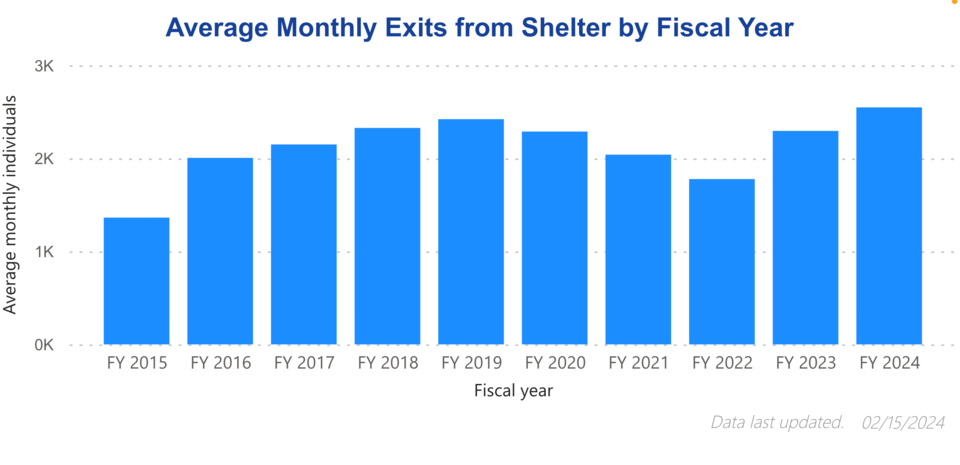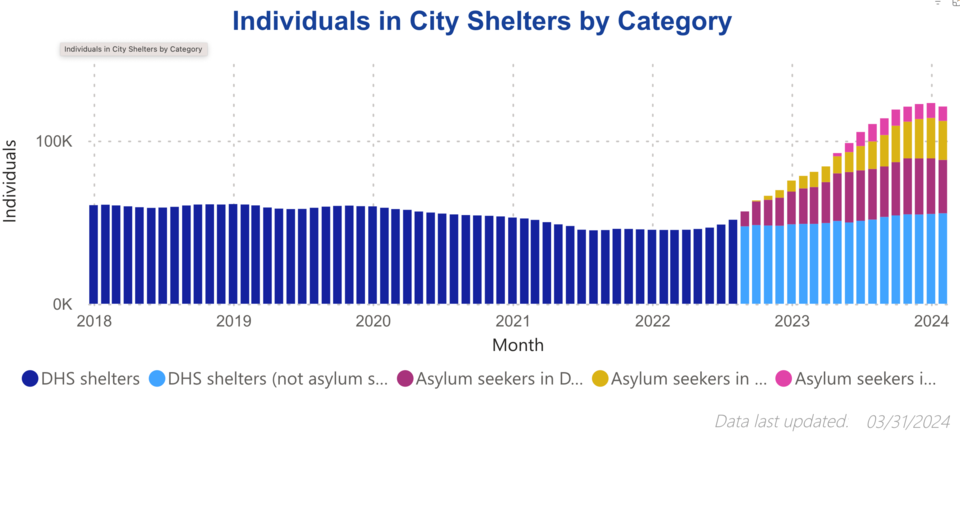New York City Comptroller Brad Lander has launched a new dashboard to track New York City’s shelter population — broken down by family type, age, and race, factors leading to homelessness like eviction filings, and shelter exits with housing vouchers.
“We urgently need to combat the homelessness crisis, and we have a much better chance of doing that effectively if we look clearly and consistently at the data,” said Comptroller Brad Lander. “Looking squarely at eviction trends can focus the City’s efforts to prevent evictions and keep people in their homes in the first place. And looking at what’s effective in helping people exit shelter keeps our eye on the goal of making sure every New Yorker has a stable and affordable place to live.”
Charting Homelessness in NYC tracks key metrics like shelter population, evictions, and shelter exits.
The dashboard found more than 120,000 individuals resided in City homeless shelters in February 2024, including asylum seekers and new arrivals. The current shelter population sharply rose by 167% over the past two years, as tens of thousands of migrants from across the world have arrived in New York City seeking asylum.
Unlike other major cities in the United States, New York City’s right-to-shelter – established through a series of court cases and consent decrees — has ensured that the vast majority of people experiencing homelessness in New York City are able to take refuge within the shelter system. Nearly 95% of New Yorkers experiencing homelessness reside within a City shelter. In most other large U.S. cities, a much higher percentage sleep on the street.
Pandemic-era policies including eviction moratoria helped reduce the number of individuals in New York facing homelessness and living in shelters: In August 2021, there were 45,000 individuals in NYC Department of Homeless Services (DHS) shelters, the lowest population in nearly ten years. Typical claims against renters in housing court for unpaid rent jumped from about $3,000 before March 2020 to more than $5,000 since July 2020. Renters who were unable to pay rent during the depths of the pandemic may account for this increase in back rent due.
CityFHEPs vouchers have become the primary means of rental assistance; see Exits for breakdown by program. An audit conducted by the comptroller’s office found that individuals and families that leave shelter with a “subsidized exit” are much less likely to return to shelter.

Data showed the City helped 11% more people exit shelters through vouchers and other programs each month this fiscal year compared to last year. Twenty-five percent more people are leaving shelter with CityFHEPS vouchers in FY 2024 compared to last fiscal year. However, the number of individuals who moved from shelters into NYCHA housing is at its lowest level in a decade, an 80% drop in monthly exits since FY 2015.
In August 2021 there were 45,000 individuals in DHS shelters, the lowest daily population in nearly ten years, but then the pandemic-era eviction moratorium came to an end and eviction filings resumed. At the same time, New York City began to receive tens of thousands of new asylum seekers in the summer of 2022, many of whom have sought refuge in City shelters. The combination of these factors caused the shelter population to balloon over the past two years, with the City providing some form of shelter and services to over 120,000 individuals each night.
With the end of eviction moratoria and a shrinking supply of affordable homes, data show renters are now facing the economic costs of the pandemic. The new data dashboard allows for detailed monitoring of cases filed against tenants in housing court to track these changes.




